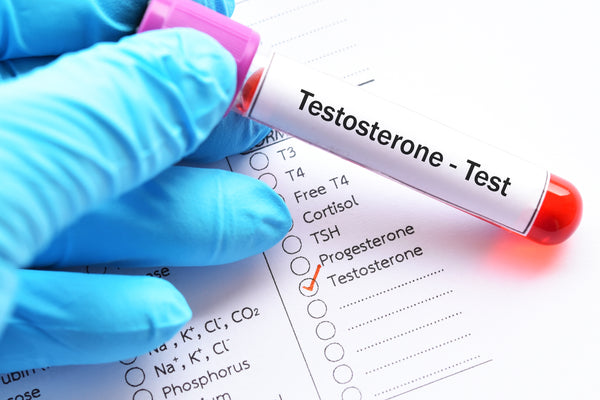Testosterone 101: Part 1 - What is it?

Are you feeling a little sluggish? A little grumpy? Maybe feeling a lack of sex drive?
Or, worse, maybe you have lost your interest altogether?
Well, before you assume anything, it might be a good idea to take a look at your testosterone levels.
If all of the above hits home, chances are good that they're dropping - and that's not something that just affects elderly men.

As a matter of fact, testosterone levels start declining when we reach our late 20s, and by the time we hit our golden years, they can be dangerously low.
But don't worry - there are ways to boost and maintain those levels so you can enjoy your innate masculinity, cognitive sharpness, recovery, and muscle mass!
In this 3-part article series, you will learn:
- What testosterone is
- How it functions
- What happens when it’s low
- How you can boost it naturally
- When to resort to testosterone replacement therapy (TRT)
Indeed, that is a lot of ground to cover, so we’ve separated this into 3 separate parts.
In this part 1, we’ll start with the basics.
Ready? Let’s go!
What is Testosterone?
Testosterone is an essential hormone that serves various functions in both the male and the female bodies.
Obviously, in men, it is in higher concentrations, which is perhaps why it is referred to as the “male hormone.”
Testosterone is produced primarily by the testicles in the male body, while women produce small amounts of testosterone in their ovaries and adrenal glands.
Functions of Testosterone
Testosterone is the main androgenic hormone, or in other words, a hormone that vastly contributes to growth and reproduction.
It is involved in the development of the male genitalia and secondary sexual characteristics.
The hormone has an anabolic effect in both sexes and has also been shown to affect behavior, too!
The main functions of testosterone include but are not limited to:
- Libido regulation
- Development of male traits
- Bone mass
- Fat distribution
- Strength development
- Muscle mass development
- Red blood cell production
- Sperm production
Symptoms of Low Testosterone
Low testosterone is also known as Hypogonadism or Andropause and is something that naturally occurs as we age.
Without a doubt, the best way to determine if you have suboptimal levels of testosterone is to get a blood test done.
Nevertheless, there are certain symptoms that can make low testosterone quite obvious.

The symptoms can include:
- Erectile dysfunction
- Weight gain
- Lack of sex drive
- Decreased muscle mass
- Depression
- Decreased cognitive function
If you're struggling with these symptoms, it might be a good idea to get tested for low testosterone levels to confirm your suspicions.
Normal Levels of Testosterone
Now, granted - Because this is an important hormone in both genders that’s produced in different amounts by the body, the normal, healthy levels of testosterone are different.

Specifically, in men, a healthy baseline of testosterone is considered:
- 300-1200 ng/Dl for the total testosterone levels
- 8.5-25 pg/Ml for the free testosterone levels (actually usable/active testosterone)
For women, those numbers go from 15-70 ng/Dl & 0.5-5 pg/Ml, for total & free testosterone, respectively.
Generally speaking, the closer you are to the upper end of that range, the better it is for you!
If however, you’ve been diagnosed with low testosterone, that is likely due to a variety of factors, including, but not limited to:
- Lifestyle
- Eating habits
- Activity levels
- Toxic habits
- Sleeping patterns
- Stress management
In part 2 of our Testosterone 101 article series, we’ll go over the most important things one can do to naturally boost their testosterone levels back to a normal, healthy baseline.
Stay tuned and see you in part 2!




